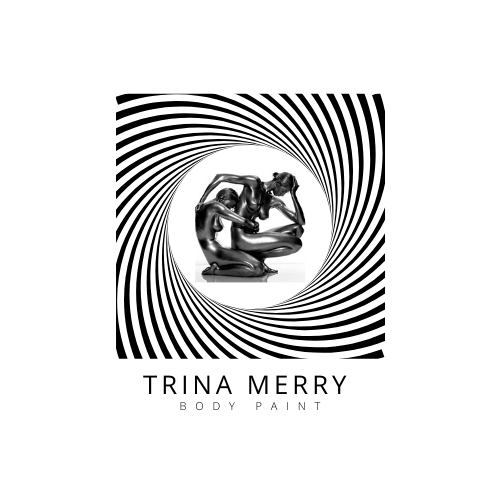Bodypainting, just like any form of art, gives us the ability to explore ourselves, our world, and how we interact with our space. We have the freedom to create unparalleled experiences that give us a deep, meaningful connection to our surroundings.
Recently, Trina sat down with one of her bodypaint models, Zachary Koval (who was also named PETA's "sexiest vegan") for a podcast episode to discuss bodypainting, our world, and how art fits into it. They touched upon multiple different topics, ranging from hotspots in New York to the rich history of bodypaint art. Here are three key takeaways from that discussion.
Bodypaint Art Has A Rich History
Camouflage, where an artist paints the human body to blend in (nearly entirely) with the background, is an exquisite art form. It turns out that this art has a rich history as a tool for peace. The heyday, as Trina explains, was in the 60s and 70s with an artist named Kusama from Japan. Its original intent was to promote love and peace, not war, which was going on all over the world (Vietnam, for example).
Bodypaint shows that we blend in with our surroundings. It defines how we are one with nature, with each other, and the world around us. It's the ultimate statement of togetherness, not separation. This art form, throughout history, has always reflected that.
New York City Is Alive With Energy For Artists Of All Persuasions
Zach and Trina, who are both from the west coast, both agreed that New York is the place to be for artists. There is an energy to this city, but more importantly, there are thousands of people living here who are just as passionate about your art as you are. It's a magnifying effect that creates possibilities that aren't available anywhere else in this world. If you're looking at the power of art to change our world for the better, New York is the place to be!
Art, Including Bodypaint, Has The Power To Challenge Perceptions
Bodypainting, in particular, is a unique art form. It challenges perceptions. Zach discusses in the podcast how bodypainting takes away the boundaries. You're putting a person into the environment, and, at first, you think you know what that image is. But then you see the model, and you realize there's something hidden. The image is still reality - it's an illusion in the sense that the paint lets the human body blend in with the environment - but it's real because it shows how we are one with our surroundings.
Zach put it best when he noted that "it makes people take a second look and see that things aren't always as they appear... we need to do more of that in this world before we jump to assumptions or jump to conclusions or opinions." Bodypaint gives people a moment to pause, reflect, and see that humans are part of something bigger and that we don't have knowledge of the whole picture until we pause and think about it.
Listen To The Podcast
There's more to the discussion than just these three points! If you're interested in the world of art, you should check out the podcast. It's full of insights, fun discussions, and lots of thought-provoking ideas!

